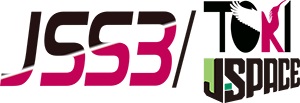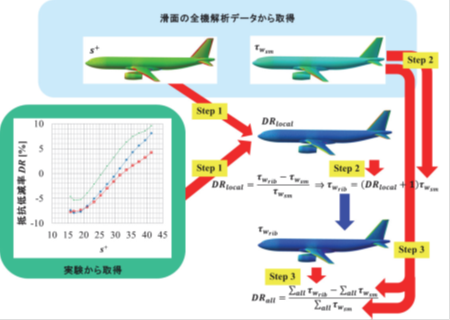FINE: Flight Investigation of skiN-friction reducing Eco-coating
JAXA Supercomputer System Annual Report April 2016-March 2017
Report Number: R16E0003
- Responsible Representative: Yoshikazu Makino(Next Generation Aeronautical Innovation Hub Center, Aeronautical Technology Directorate)
- Contact Information: Mitsuru Kurita(kurita@chofu.jaxa.jp)
- Members: Mitsuru Kurita, Fumitake Kuroda
- Subject Category: Aviation(Aircraft)
Abstract
FINE:Flight Investigation of skiN-friction reducing Eco-coating. The riblet reduces skinfriction on the surface of an airplane with turbulent boundary layer. An original technique for the riblet is developed in JAXA. In the FINE, the riblet is adopted on the fuselage of an experimental airplane Hisho in JAXA.
Goal
This study puts research results of JAXA’s riblet technology to practical use, which increases competitiveness of the aeronautical industry in Japan.
Objective
This study investigates effects of skin friction reduction by the JAXA riblet in flight.
References and Links
N/A
Use of the Supercomputer
Estimation of Drag-Reducing Performance of Riblet Applied to the Aircraft
Necessity of the Supercomputer
CFD using RANS, Visualization by Fieldview.
Achievements of the Year
This study estimates drag-reducing performance of riblet applied to the whole body of an aircraft. The point of this technique is how to estimate the wall shear stress on the aircraft body covered with riblets. First, RANS analysis of flow around an aircraft which is not covered with riblets is conducted to obtain the whole-body distributions of wall shear stress. The distributions of wall shear stress of an aircraft covered with riblet are obtained from the combination of the RANS results and drag reduction rate graphs obtained from wind-tunnel test. Finally, drag reduction rates are estimated from surface integration of the wall shear stress on both the riblet surface and smooth surface. As a result, the estimated drag reduction rates are close to that obtained by the previous flight tests, which indicates that this technique is reasonable.
Publications
N/A
Computational Information
- Parallelization Methods: Process Parallelization
- Process Parallelization Methods: MPI
- Thread Parallelization Methods: n/a
- Number of Processes: 120
- Number of Threads per Process: 1
- Number of Nodes Used: 4 , 10
- Elapsed Time per Case (Hours): 12
- Number of Cases: 4
Resources Used
Total Amount of Virtual Cost(Yen): 138,938
Breakdown List by Resources
| System Name | Amount of Core Time(core x hours) | Virtual Cost(Yen) |
|---|---|---|
| SORA-MA | 85,500.21 | 135,330 |
| SORA-PP | 23.20 | 198 |
| SORA-LM | 0.00 | 0 |
| SORA-TPP | 0.00 | 0 |
| File System Name | Storage assigned(GiB) | Virtual Cost(Yen) |
|---|---|---|
| /home | 6.34 | 22 |
| /data | 93.33 | 325 |
| /ltmp | 878.91 | 3,062 |
| Archiving System Name | Storage used(TiB) | Virtual Cost(Yen) |
|---|---|---|
| J-SPACE | 0.00 | 0 |
Note: Virtual Cost=amount of cost, using the unit price list of JAXA Facility Utilization program(2016)
JAXA Supercomputer System Annual Report April 2016-March 2017



